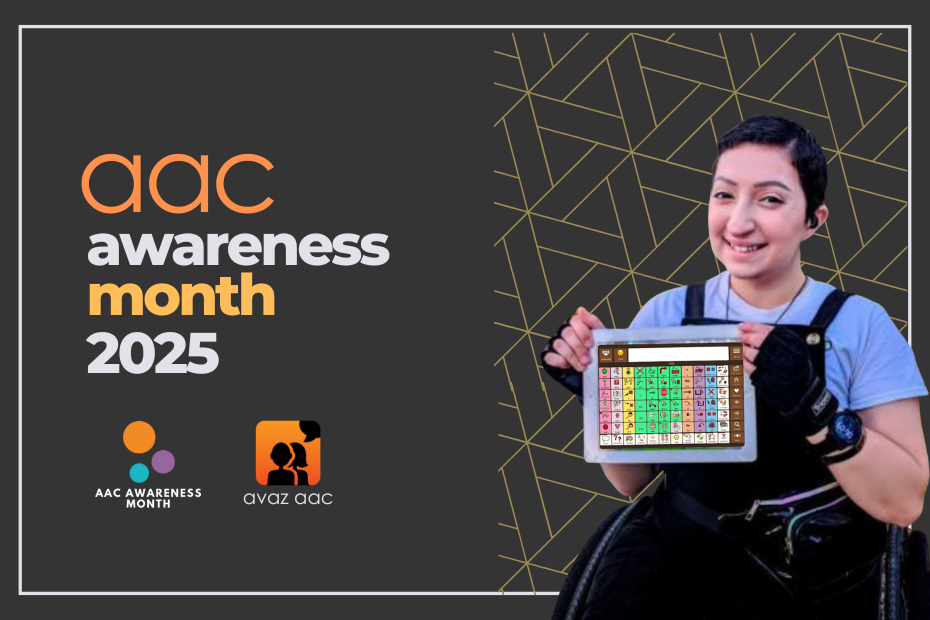Human beings are social creatures. Social Skills, therefore, are considered to be one of the most important aspects of human life. These skills are deemed an integral part of functioning in society. One begins to pick up these skills from a very young age. This, in turn, prepares one for a lifetime of healthier interactions while enabling the capacity to make meaningful connections with others.
However, the very nature of social skills is subjective. The capacity to pick up these skills at a level that is socially acceptable varies from person to person. Given this subjectiveness, persons with disabilities may find it challenging to understand and demonstrate these skills.
What are some of the ways in which such skills can be developed in a manner that is reaffirming? Team Avaz has been researching this and we have put together some proven ideas that you can try out for yourself.
Modeling
The importance of modeling, in every aspect of life, is worth stressing on repeatedly. There is no doubt that it is the single most effective technique to teach any kind of skill to your child. As a caregiver, you can help model different kinds of social interactions by enacting them to or with your child. Enacting is a great way to familiarise children to a new environment and it enables them to be prepared for a new or unexpected interaction.
Pick one scenario to enact and model your child until they are able to interact with ease.
Self-Modeling
While modeling involves an active role by the caregiver, self-modeling is where the caregiver takes the back seat. One way of self-modeling would be to record the student while they perform or practice the social skill.
Begin this process by first breaking down the interaction to smaller segments. Have your child perform one piece and record it using your phone. You can also prompt or model when needed.
Finally, combine all the pieces together to create a seamless recording. Play this video back to the child. As they watch themselves performing the task from start to finish, they will understand the concept better.
The video can also be used as a tool for reiteration. Backed with practice, this technique will support the child’s effort to generalize any social skill that they are looking to pick up.
Cartoon Strip Social Interaction
Cartoon strip conversation is a technique innovated by Carol Gray. It is a way to let children(or any learner) fill their thoughts in speech bubbles before they role-play a conversation. Cartoon Strip Social Interactions support all levels of challenge and help with improving the fluency of social skills. Research has shown that cartoon strip interaction is an effective way to enable students to improve social interaction skills.
The comic strip below can be used as a guide. There are many such resources available on the internet for free. Use one such comic and guide your child to fill in the bubbles in the boxes. For non-verbal children, you can use the same technique hand in hand with their AAC technology of choice. Prompt them to tap out responses on their AAC device.

With this method, you can introduce a whole range of interactions including greetings, requests, initiation of social interactions, and negotiations to your child.
For instance, you can practice Greetings like “Good Morning” or “Hi, I’m Johnny”.
Another example would be a Request like “Can you please help me?”.
Role-Playing
The practice is an essential tool for building social skills. Role-playing offers a great way for a child to practice a social skill with another person in a controlled and safe environment. By exposure to other people’s responses, the child will get to grasp the interaction from different perspectives while broadening the scope of their understanding of the skill.
The comprehension and demonstration of emotions, expressions, and interactions can seem quite daunting for a child with a disability. But patient guidance and support will enable them to develop such skills over time. Coupled with practice in a safe and affirming environment, children can acquire the skills to identify emotions as well as their causes and effects in various scenarios. This will enable them to build healthier and more meaningful relationships with their friends and family.
What are some of the ways in which you have tried enabling social skill learning? We invite you to share your ideas with us and our readers in the comments section below! 🙂
References:
https://www.thoughtco.com/cartoon-strip-social-interactions-3110699



